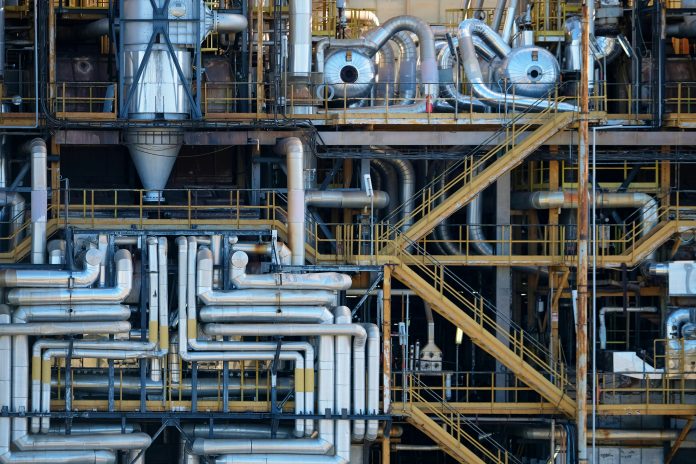Decarbonising industrial heat is crucial. Many industries contribute 29% to global GHG emissions every year, setting their role as major carbon emitters
A part of this is the industrial sector’s need for heat, almost entirely caused by fossil fuels. Heat makes up two-thirds of industrial energy demand and almost one-fifth of global energy consumption.
This demands urgent change, especially as research has revealed the adverse impacts of heat on health.
Decarbonising industrial heat is, therefore, a vital part of our global strategy against climate change. The trouble is that it remains a complex challenge due to the diverse nature of the heat required.
Fortunately, there are solutions on the market, including emerging technologies that can tackle temperature requirements of over 1,000°C.
In this article, we’ll explore heat decarbonisation solutions in detail to help manufacturers determine the best route on their journey to net zero.
Understanding the challenges of decarbonising industrial heat
Manufacturers use heat across a wide variety of processes, which means the temperature and quality of the heat required can be vastly different from application to application.
For this reason, it’s crucial that heat solutions are compatible with the various products and process conditions.
Generally speaking, low-grade heating is more accessible to decarbonise than high-grade heating as more mature solutions are available.
Many explanations for high-temperature requirements are still in the early stages of commercialisation.
However, it won’t be long before these are made available.
Moreover, replacing existing equipment and infrastructure can be capital-intensive, particularly when these assets haven’t yet reached the end of their lifecycle.
Energy assets typically have a long life, so manufacturers may be reluctant to replace them.
What solutions and technologies are available to decarbonise heat?
Several technologies, such as solar thermal systems, geothermal heat pumps, biomass boilers, and wind-powered heat systems, can provide sustainable and low-carbon heat for industrial processes.
Ongoing research is also aiming to address the demand for high-temperature solutions.
At Drax, we can help you understand how to integrate and leverage these new technologies effectively while supporting the UK’s push to net zero.
Here are a few examples:
- Shallow /deep geothermal
- Can effectively generate hot water but
is limited to some regions of the country and involves complex and often
expensive drilling operations.
- Can effectively generate hot water but
- Solar thermal
- An excellent low-carbon technology that is underused in the UK. Solar thermal systems can absorb heat even during winter, cutting energy costs. It can also be installed in a new building at a relatively low price and has a 20–25-year life expectancy. However, its efficiency depends on the deployment location.
- Heat pumps
- Currently the only available, scalable, and proven technology for fully decarbonising heat and hot water. Heat pumps can efficiently generate heat without direct carbon emissions. However, while they’re an efficient solution for low temperatures, they’re less effective for medium-to-high temperatures.
- Biomass and waste boilers
- Besides being an excellent renewable energy source, biomass can also provide low-carbon heat. Biomass boilers and combined heat and power (CHP) systems produce heat and electricity using organic resources like agricultural waste.
- Biogas/biomethane
- Can turn waste products into a sustainable and cost-effective source of heat and power.
However, availability in the UK is limited, and the head of feedstock needs to be carefully considered to ensure it’s genuinely carbon efficient.
What are some of the emerging solutions for reducing carbon?
Several promising technologies are currently being developed to decarbonise heat within manufacturing. These include hydrogen, electroprocessing, and carbon capture, use and storage (CCUS).
Each solution will likely play a significant role in decarbonisation and is suitable for different temperatures and applications.
- Hydrogen
- Not likely to be used for general heating and hot water in buildings due to scarcity, cost, and inefficiency concerns. However, it shows promise for very high-temperature processes without alternatives.
- Electroprocessing
- Direct electricity can be applicable in specific circumstances, such as short-duration and very high-temperature processes. It can achieve zero carbon emissions but may be less efficient than other technologies for longer-duration heating.
- Carbon capture, use and storage (CCUS)
- An emerging technology that holds enormous promise. Once fully deployed at scale, CCUS will likely play a central role in providing harmful emissions.
To support a zero-carbon, lower-cost energy future and meet the goal of being carbon negative by 2030, Drax is developing Bioenergy with
Carbon Capture and Storage (BECCS) technology.
This transformative technology will contribute to decarbonising whole industries and organisations by enabling them to achieve negative emissions and address climate change.
How will the UK succeed in Carbon-neutralising heat for 2050?
The industry faces a significant challenge in decarbonising heat due to the enormous scale of heat used for processes requiring high temperatures. Unfortunately, this area of carbon emission reduction has been neglected.
However, continuous advancements in low-carbon heating technologies, including enhanced efficiency and availability, are changing this. With the right level of urgency and investment, we may succeed.
In the meantime, manufacturers should focus on developing a robust strategy which identifies the steps they can take today and the opportunities for the future.











